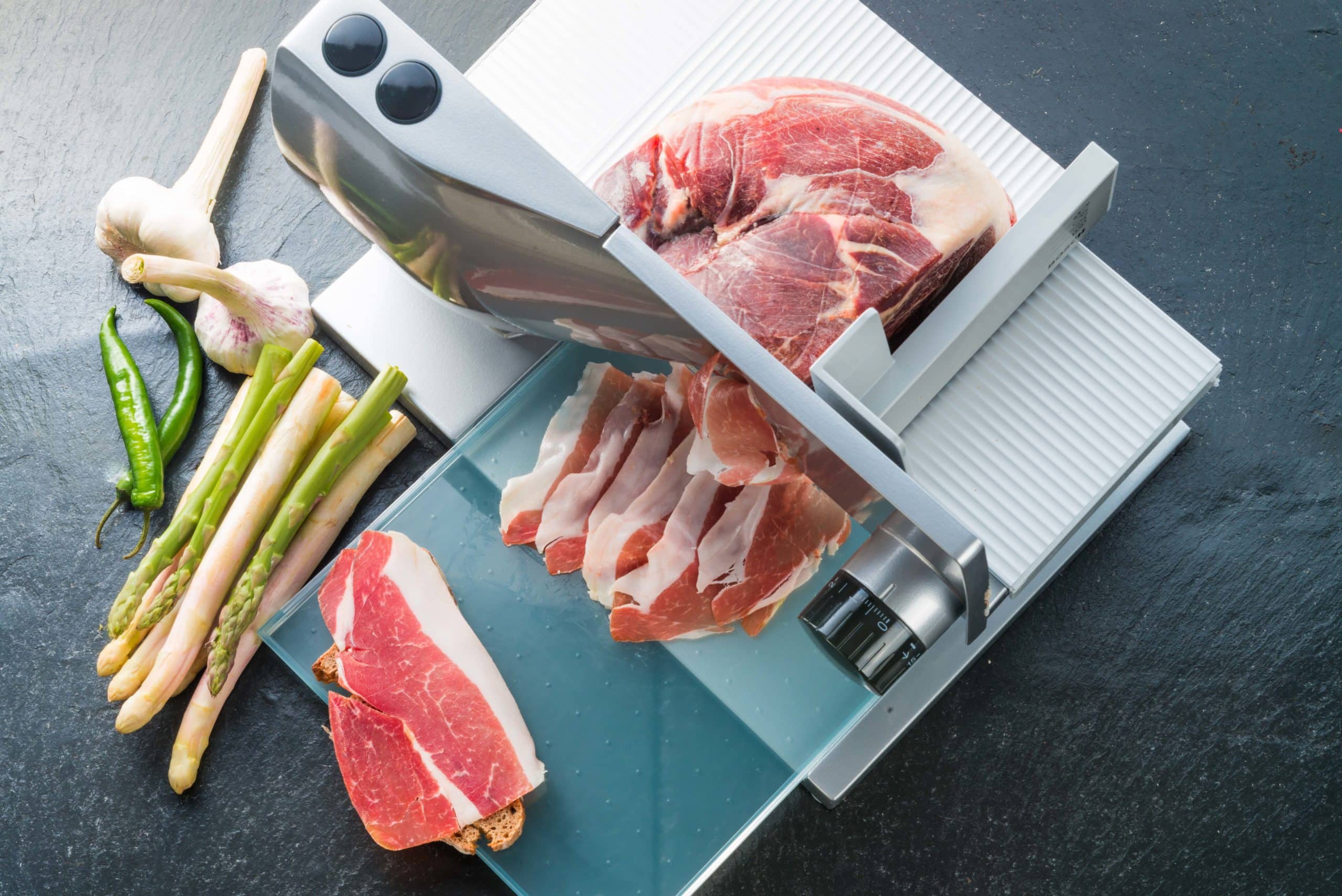

If not, a sharp saw blade is not something you want to fumble with. Ideally, those parts can all be removed easily. You’ll find that most slicers have detachable parts that might include the blade guard, blade, carriage and meat tray. Make sure that process is as painless as possible, literally as well as figuratively. Speaking of messes, you’re going to be cleaning that meat slicer after nearly every use.Some may have plastic accessories such as blade guards or handles, but ideally, those will have some kind of waterproofing. For obvious reasons, you’re going to want a surface that won’t rust or stain easily, which is why most slicers of any quality are made out of stainless steel. Be on the lookout for cheap materials, too.But if counter space is at a premium, look for a compact model. There’s no getting around the fact that slicers are fairly bulky, weighty pieces of machinery - and that’s for safety as much as anything else. The next thing you’ll want to look at is the future home for your device.That should be fine for vegetables, cheeses and most meats, but consider a 10″ blade if you’re cutting large slabs of roast.

Most commercial slicers have a 7-inch diameter saw.

You’ll get slices down to the last sliver of food, each one cut to a uniform thickness and as thin as you need. They can be used to cut onions or tomatoes for a salad, cheese slices for sandwiches, homemade potato chips and more. Depending on the household, meat slicing might not even be the primary use. While the catch-all name is “meat slicer,” these devices are by no means limited to one job.

Meat slicer for home manual#
Still, some prefer the control of a manual slicer, where the carriage is moved by hand - especially with tougher meats that might need additional pressure to cut. Just put the food in, turn it on and it slices in seconds. Electric meat slicers make the whole process even easier, thanks to an electric motor that moves the carriage back and forth. In the last few decades, we’ve seen electric slicers come into prevalence for home units as well as commercial use. Needless to say, it’s a vast improvement over the budget alternative of a simple knife, cutting board and elbow grease. You can generally make those slices as thick or thin as you need with the use of a knob on the side that lowers or raises the carriage. A carriage carries the meat (or other food) over the exposed sharp edge, cutting it into slices that drop on the other side. Essentially, there’s a rotating steel blade with some sort of guard plate covering it. The basic design of the meat slicer hasn’t changed much over the years. There’s just something about having a meat slicer on your counter that says “chef at work.” It’s a staple on any deli counter, but it can be just as much of a time-saver at home - and no, you don’t need to be a chef to use one.


 0 kommentar(er)
0 kommentar(er)
